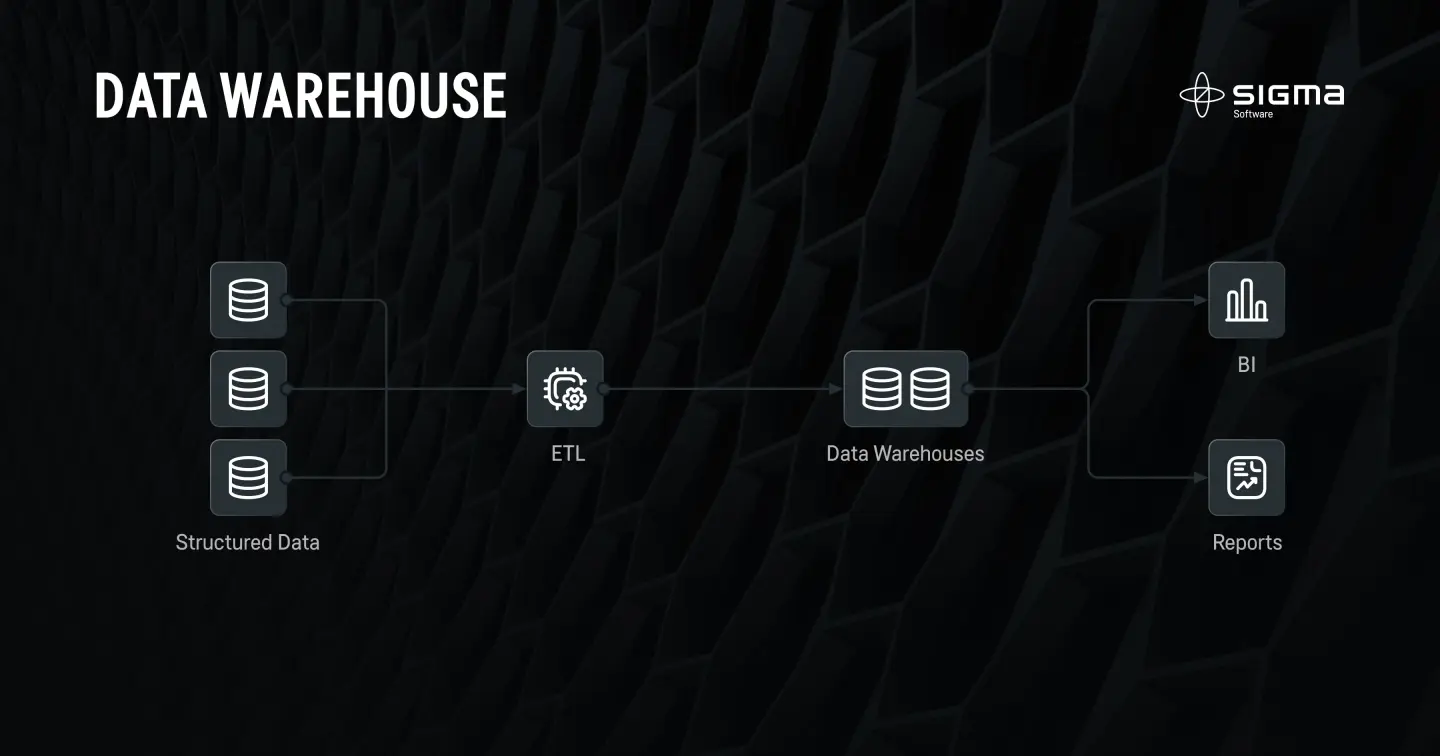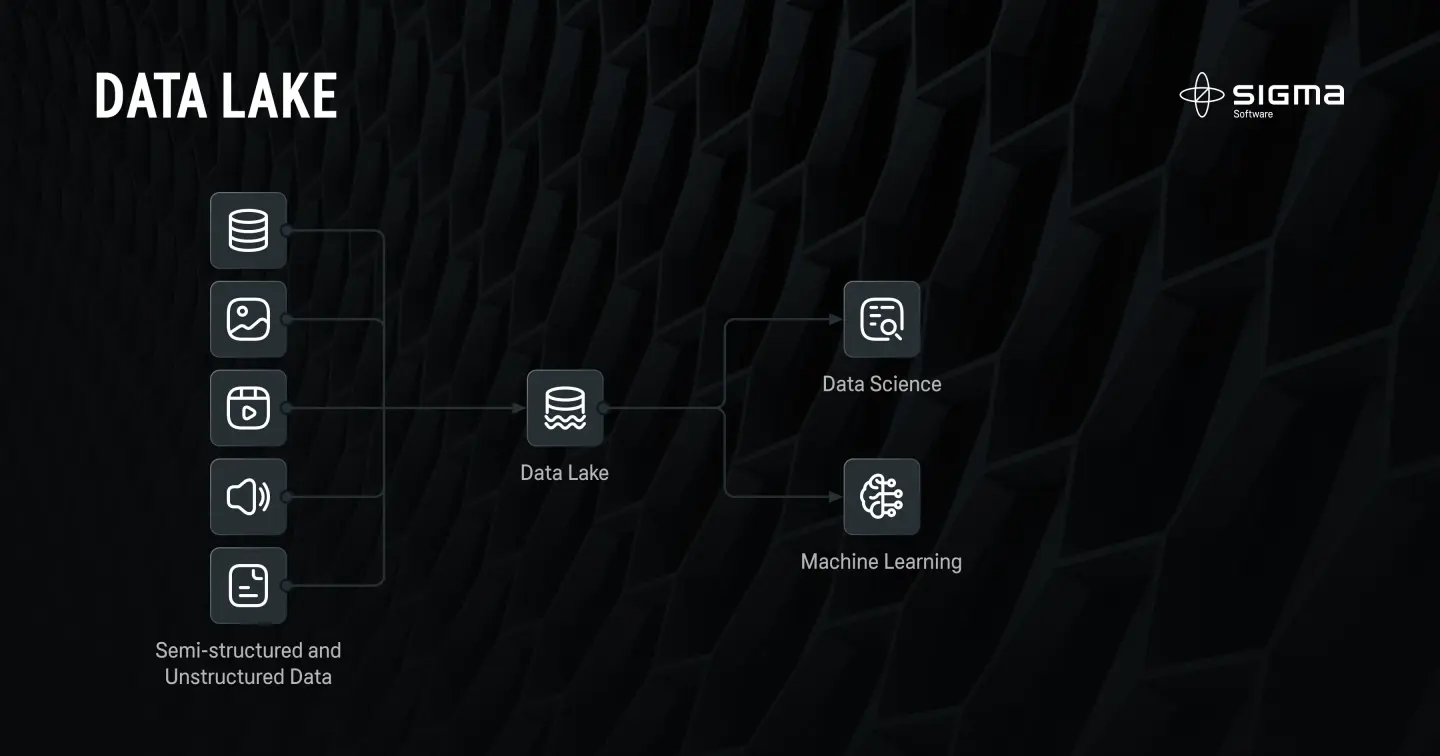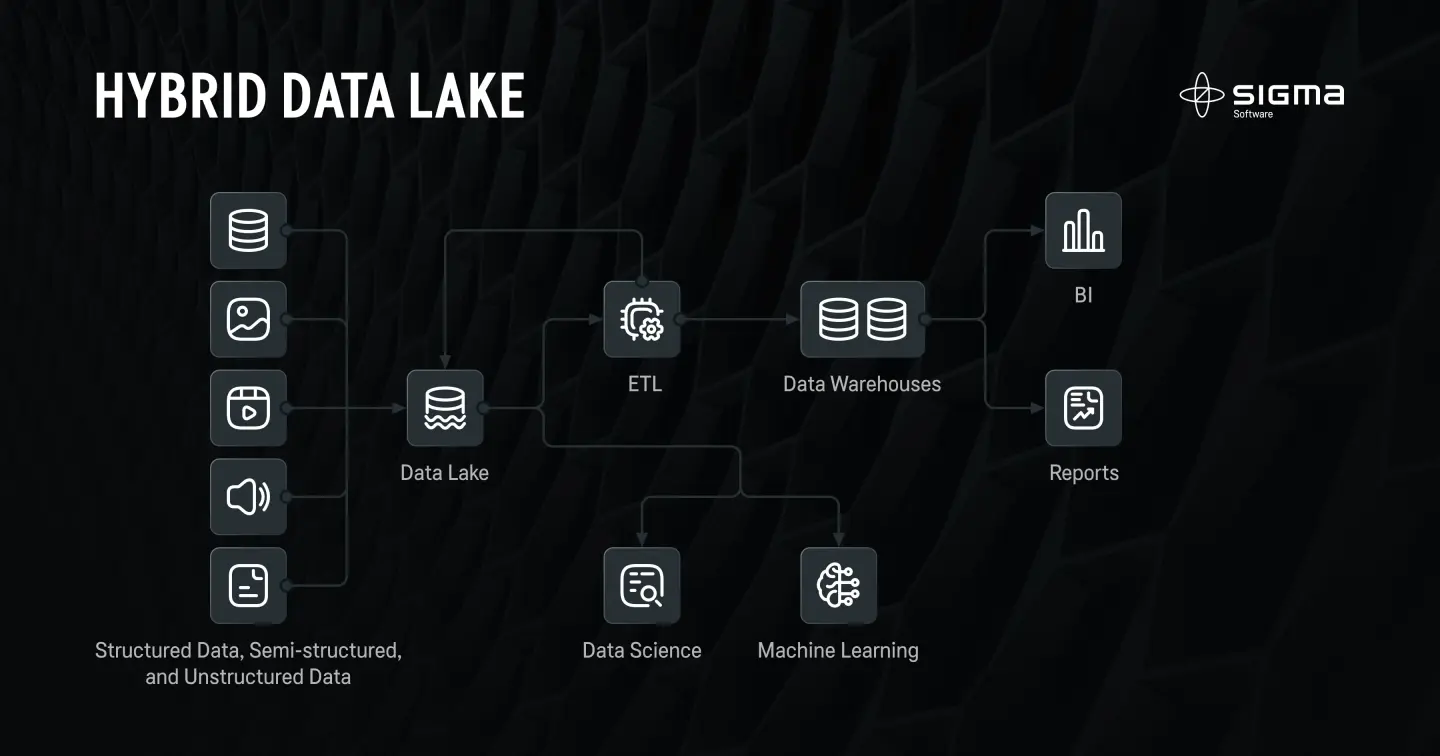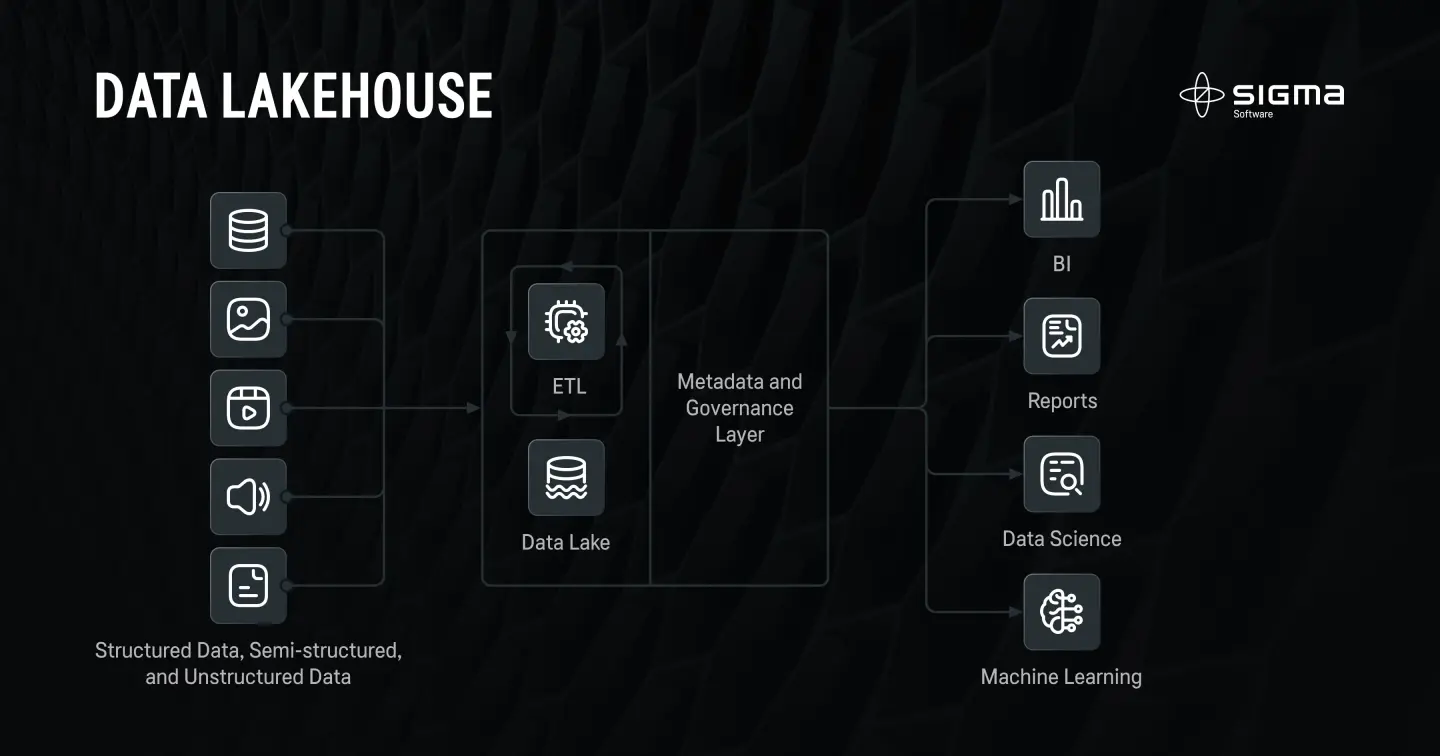Choosing the Optimal Data Storage Architecture
Explore the differences between a Data Warehouse, Data Lake, and Data Lakehouse architectures to choose the best fit for your business needs.
Join the DZone community and get the full member experience.
Join For FreeData Warehouse, Data Lake, and Data Lakehouse are the most popular types of data storage architectures that may benefit any business looking to develop its analytics capabilities. Each of them has a set of advantages and best-fit use cases. The most important thing is to choose the data storage approach that best suits your business needs. In this blog post, we'll describe the workings of each solution to help you make a more informed decision.
Data storage architecture is a hot topic in today’s business world as the demand for big data analytics is growing. Businesses generate massive amounts of data and require a robust solution to collect, store, and analyze it effectively. Data storage is the foundation of big data architecture and its components. It provides an environment for storing and serving data and has a direct influence on essential KPIs, such as:
- Time-to-insight and query response time: Efficient storage solutions can dramatically reduce query processing and retrieval time. Thus, businesses get information faster, can spot inefficiencies or opportunities on time, and react more effectively.
- Data availability: Easy access to data means it’s available at the right time, allowing businesses to use it when they need insights. This, in turn, contributes to higher operational efficiency and better quality decision-making.
- Cost: Optimized data storage solutions help companies reduce hardware, cloud infrastructure, and/or software license costs. Businesses can also scale their systems up and down according to their needs with a reasonable budget and effort.
Therefore, choosing the proper data storage type and optimizing it for your current and future needs is essential to ensure optimal performance over time.
Historically, the two most popular approaches to storing and managing data are Data Warehouse and Data Lake. The choice between them usually depends on business objectives and needs. While Data Lakes are ideal for preserving large volumes of diverse data, warehouses are more favorable for business intelligence and reporting. Sometimes, organizations try to have the best of both worlds and mix Data Lake & Data Warehouse architectures. This, however, can be a time and cost-consuming process.
Against this backdrop, a new hybrid approach—Data Lakehouse—has emerged. It combines features of a Data Lake and a Data Warehouse, allowing companies to store and analyze data in the same repository and eliminating the Data Warehouse vs. Data Lake dilemma. Data Lakehouse mixes the scalability and flexibility of a Data Lake with the ability to extract insights from data easily. Ever so compelling, this approach still has certain limitations. It should not be treated as a “one-size-fits-all” solution.
What Is a Data Warehouse?
Data Warehouse is a centralized repository for the storage of structured data. The data flows into the storage from various sources and undergoes a processing stage before hitting the Warehouse repository. Data Warehouse storage is designed as a well-organized library of data that can be easily retrieved and analyzed. Hence, organizations get insights faster, which improves their operations and decision-making. Also, with its organized data, Data Warehouse is a basis for conducting practical BI analysis.

Pros
The Data Warehouse is a powerful solution for organizations that want to structure large volumes of data and improve analytics. Businesses can take advantage of its well-organized storage and out-of-the-box features that empower organizations to gain insights quickly and easily:
Enhanced ETL Performance
ETL (Extract, Transform, Load) is a data integration process that helps organizations prepare their data for advanced analytics. Data Warehouse storage is the right choice for maximizing the efficiency of the ETL due to its structured organization and fast query processing capabilities. This, coupled with data transparency, speeds up the ETL pipeline development, making the overall process faster and more efficient than other storage options like Data Lake. The efficient ETL process, in turn, helps organizations streamline their data integration efforts and ensure data consistency across multiple sources.
Higher Security
A structured data organization provides more granular data protection. Modern Data Warehousing systems typically offer advanced security features off-the-shelf, including column-level and row-level security. Modern Data Warehouse solutions also have built-in encryption and access control mechanisms that comply with GDPR requirements. This increases data protection from unauthorized access and potential breaches.
Fast Query Processing
Data Warehouses are usually faster than any other type of data storage for query processing. They were initially optimized to process large and complex datasets. They safeguard fast querying through well-structured data organization, data storage in a columnar format, and extensive dataset partitioning. Thus, businesses get the necessary information swiftly and can react to uncovered inefficiencies or opportunities faster than competitors.
Cons
Data Warehouses significantly benefit organizations that store, organize, and analyze large data volumes. Yet, they also have some drawbacks that businesses should consider before implementing a Data Warehouse solution.
Complex Data Design
Creating a well-structured data repository requires experience and knowledge in data engineering. So, setting up efficient tables and data relationship design in a Data Warehouse is complex and challenging for organizations lacking relevant technical expertise.
Limited Agility
A Data Warehouse only stores specific transformed and structured data for particular use cases. Hence, if a business happens to change or expand its analytics objectives at some point in the future, the stored data may not be enough to meet those needs entirely. So, when an organization wants to analyze all their incoming data, both structured and unstructured, they need extra tools and solutions to make this possible. This also includes additional time, effort, and costs to modify existing ETL processes, add new data sources, or set up integration with external tools and platforms.
High Costs
Due to its comprehensive analytical capabilities, data warehousing costs are typically higher than other data storage solutions. The price varies depending on the storage size, data complexity, processing tools, deployment model (cloud, on-premises), and the chosen platform. Considering the costs of ongoing support and maintenance of your Data Warehouse is also necessary. These tend to grow over time; the more data you store, the more you can expect to pay.
What Is a Data Lake?
Unlike Data Warehouse, Data Lake allows businesses to store and process data in various formats (structured, unstructured, and semi-structured) and types (audio, video, and text) in one centralized repository.
According to the 451 Research’s report, Data Lake is a popular solution for businesses of all sizes, as (71%) of enterprises are currently using or piloting a Data Lake environment or plan to do so within the next 12 months.

Pros
One distinct feature of Data Lake is that it provides no limits on data format structure, type, or amount and guarantees that businesses can extract insights from any section of their data anytime. Other advantages of Data Lake include:
High Agility
Since a Data Lake has no strict requirements for receiving only structured data, it gives organizations more space for analytics maneuvers. Moreover, businesses may benefit from a Data Lake's ability to accommodate growing data volumes easily. It is often built on distributed storage systems such as Hadoop Distributed File System (HDFS) or Amazon S3, which can be scaled up and down when needed. As a result, organizations can extend their storage with new data sets, types, and sources without significant changes to their architecture.
Lower Costs
Data lakes are less expensive than Data Warehouses as they don’t require data transformations or pre-processing before storage. Storage is generally very affordable in cloud data lakes.
However, analytics' overall TCO (Total Cost of Ownership) depends on the storage pricing and data processing cost. While Data Lake has lower data storage rates, processing pricing is usually higher than in a Data Warehouse. The complex querying in an unstructured Data Lake repository requires additional effort and more processing power to get the relevant information, which results in higher costs. So, you must shape your current and future needs beforehand to ensure you won’t incur unnecessary expenses over time.
Cons
Data Lake can be a powerful tool for managing large and diverse data sets, but it also has drawbacks and limitations. Thus, businesses should weigh the potential challenges that come with utilizing this type of data storage:
Lack of Structure
Extraction of specific data from the Lake can be challenging as unstructured data requires more time for queries and management. The Lack of structure also affects data transparency, as it is harder to ensure data is stored accurately and consistently. Moreover, without appropriate data governance, a Data Lake risks becoming a data swamp – storage containing chaotic data with poor value for a business. This can be treated by setting up a proper governance strategy to ensure Data Lake is valuable. However, implementation usually takes additional time and effort.
Security Challenges
Data Lakes contain vast amounts of data in various formats from different sources. So, it may be challenging to identify security threats or vulnerabilities in a large, unorganized Data Lake.
Query Execution
By default, Data Lakes have no query processing capabilities and need additional big data tools and technologies such as Apache Spark and SQL query engines to run analytics on them. Hence, query processing requires more time, effort, and expertise.
What Is a Data Lakehouse?
Businesses rarely use Data Lake in its pure format. In most cases, they not only need to store data but also effectively process the data. Thus, most companies chose to go with a hybrid approach where a Data Lake is appended by a Data Warehouse. The latter acts as a layer on top of the Data Lake and provides a structured and optimized environment for analytics, reporting, and BI. This approach allows users to combine the capabilities of a Data Lake and Data Warehouse and analyze massive amounts of diverse data effectively.

However, this approach has a significant drawback—an expensive and complex setup. Unlike a Data Warehouse or Data Lake, integrating with other services and platforms requires expertise, time, costs, and extra effort. This hybrid approach has served as a foundation for a new data storage system, a data lakehouse.
The newest approach combines the benefits of both a data lake and an out-of-the-box data warehouse with a fast and easy setup process. Data Lakehouse enables businesses to store data in raw formats and provides a pre-defined data analytics structure. This is possible due to the layered Data Lakehouse architecture that combines structured and unstructured data within one repository. Thus, Data Lakehouse supports BI, ML, and data science in one platform.

Pros
Data Lakehouse combines the best features of both Data Warehouse and Data Lake. It may provide organizations with a solution to the Data Lake vs. Data Warehouse dilemma and offers advantages, including:
Scalable Repository
Data Lakehouse can preserve large volumes of data and be easily scaled by adding more servers or nodes to the system. Hence, if the volume of stored data drastically increases, it has little effect on performance.
Reasonable Costs
Data Lakehouse allows businesses to get the features and benefits of a Data Lake and a Data Warehouse in one place. This significantly cuts costs, as businesses do not have to pay for two storage sets. Moreover, Data Lakehouse architecture does not require upfront data modeling in the same way as a Data Warehouse. Instead, it leverages open-source technologies such as Delta Lake to bring reliability to unstructured data at a lower cost.
Improved Data Governance
The built-in features of Data Lakehouse provide advanced data governance capabilities for centralized management of data quality, security, and privacy. Moreover, most providers of Data Lakehouse offer ACID compliance by default. Thus, they ensure accurate, reliable data transactions and safeguard compliance with regulations such as GDPR.
Fast Set Up
Data Lakehouse offers ready-made functionality for data processing. Therefore, organizations can quickly start running their analytics without setting up and integrating additional tools, as in Data Lake. As a result, analyzing massive amounts of data becomes faster and more effective.
Cons
Appealing as it may be, Lakehouse still has several drawbacks, including:
Vendor Lock
There are only a few providers of Data Lakehouse (Databriсks, Dremio), so the choice of platforms for its implementation is limited compared to the other storages. The lack of alternatives creates challenges for businesses as there are few options. Moreover, this also brings additional challenges if organizations need to switch or expand to another platform.
It is also possible for businesses to build their own open-sourced Data Lakehouse, but it would not be as feature-rich as the ones provided by vendors. Therefore, organizations should carefully consider the long-term scalability and flexibility of the chosen Data Lakehouse solution to mitigate any potential risks if they do so.
Flexibility Constraints
The built-in feature set of Data Lakehouse has some limitations regarding customization capabilities. So, if an organization needs to modify the Lakehouse architecture at a certain point, this may unveil diverse hidden complexities and require substantial investment.
Conclusion
The Data Lakehouse vs. Data Warehouse vs. Data Lake debate is ongoing. Choosing a suitable data storage architecture depends on several factors and can become challenging for businesses.
If you’ve chosen the wrong data storage architecture type, the cost of change is usually high. So, opting for an approach that suits your business criteria is critical. This decision requires deep expertise and experience in working with different types of data storage. Hence, involving an expert will help you make the right choice and make things much more manageable.
For situations where you still doubt your use case and are unsure about plans, you can take the safe route and opt for a Data Lakehouse approach. This can also be a good compromise when you lack in-house data modeling expertise yet have some basic analytics knowledge and know the type of data you operate and where it will be stored. You can configure and manage such storage without spending money on additional expertise.
Suppose you want a robust solution that perfectly covers your needs. In that case, you should carefully benchmark your use case against available storage alternatives on the market and ensure that the chosen solution meets all your requirements.
Published at DZone with permission of Den Smyrnov. See the original article here.
Opinions expressed by DZone contributors are their own.

Comments